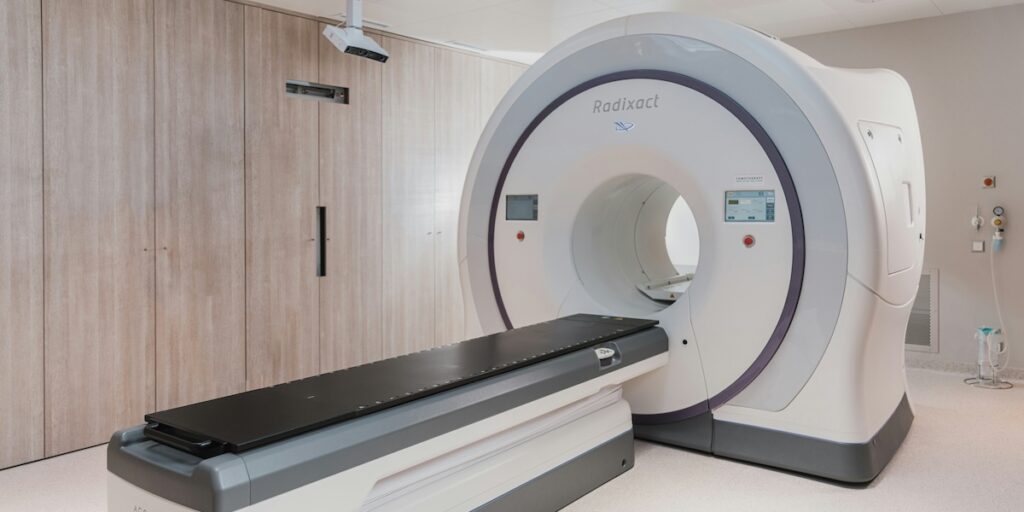We have created a new MRI scoring system to quantify the degree of patellofemoral arthritis. By creating an objective scoring system, we can then look at outcomes of different surgical procedures for patients with varying degrees of arthritis and hopefully optimize outcomes.
Overview
Patellofemoral osteoarthritis (PFOA) is one of the most common causes of anterior knee pain, particularly in women over age 50. Despite its prevalence, clinicians have lacked a standardized MRI-based framework to quantify disease severity. This new study, published in The Journal of Knee Surgery (DOI: 10.1055/a-2585-4964), introduces a new MRI scoring system that provides detailed, reproducible evaluation of patellofemoral joint degeneration. This work was led by me and my colleagues at the Hospital for Special Surgery.
Study Design
The research team analyzed preoperative MRIs from 72 patients who underwent patellofemoral arthroplasty at HSS between 2012 and 2021. All scans were obtained using 3-Tesla MRI systems with extremity coils and standardized imaging protocols that conform to International Cartilage Regeneration and Joint Preservation Society (ICRS) guidelines.
The new MRI-based scoring system incorporated the most critical structural and pathological features associated with PFOA, including:
- Patellar and trochlear cartilage damage
- Subchondral bone edema, cysts, and remodeling
- Osteophytes (bone spurs)
- Alignment parameters, such as patellar height
- Synovial inflammation
Reliability and Statistical Validation
MRI images were reviewed and scored by a fellowship-trained musculoskeletal radiologist, a musculoskeletal radiology fellow, and a fellowship-trained orthopedic knee surgeon independently scored each MRI to test for consistency. Agreement was measured using Cohen’s kappa coefficient for categorical variables and the intraclass correlation coefficient (ICC) for overall score reliability.
- Patellar bone edema (κ = 0.61) and patellar cysts (κ = 0.59) achieved moderate agreement.
- Features like cartilage damage, osteophytes, subchondral remodeling, and synovitis demonstrated good interobserver reliability (κ > 0.61).
- Patellofemoral alignment and total composite scores achieved excellent reliability (κ > 0.81).
These findings confirm that the MRI scoring system is consistent across different interpreters, highlighting its reproducibility for both clinical and research applications.
Clinical Implications of the MRI Scoring System
The system provides a quantitative and objective framework for categorizing the severity of patellofemoral joint degeneration. Unlike traditional X-rays, which only demonstrate obvious joint space narrowing in one plane and osteophytes, MRI offers insight into early and subtle changes in the cartilage and subchondral bone. This improved visualization of subchondral and soft-tissue structures can lead to more individualized surgical planning and better-informed patient counseling about prognosis and recovery potential.
This MRI scoring system can be applied to:
- Assess and stage isolated PFOA
- Predict outcomes for surgical interventions, such as patellofemoral arthroplasty, tibial tubercle osteotomy, or cartilage restoration procedures
- Facilitate clinical research aimed at correlating imaging features with patient-reported outcomes
By standardizing how MRI findings are scored, the MRI scoring system enables consistent patient stratification across institutions, improving comparability of results and the development of tailored treatment plans. This scoring system may also benefit radiologists, physical therapists, and sports medicine specialists by offering a common framework to communicate disease severity, monitor progress, and refine rehabilitation protocols across multidisciplinary care teams.
Future Directions
Ongoing work aims to expand this scoring approach to better integrate biochemical MRI sequences that quantify cartilage composition (for example, T2 mapping) and to explore correlations between MRI findings and long-term surgical outcomes. Large, prospective studies will help validate the predictive value of this MRI scoring system for postoperative recovery and joint preservation success.
Learn More
For additional information about patellofemoral arthritis assessment, knee arthroplasty, or treatment options, explore:
- Patellofemoral Arthritis Overview
- MRI Evaluation for Knee Pain
- Patellofemoral Arthroplasty
- Research and Publications
This MRI scoring system represents a step toward precision evaluation of patellofemoral arthritis, allowing surgeons and researchers to better classify disease severity, individualize treatment, and ultimately improve patient outcomes.
Read the complete original article in The Journal of Knee Surgery: Reliability of a Novel Magnetic Resonance Imaging Scoring System to Evaluate Patellofemoral Osteoarthritis.

